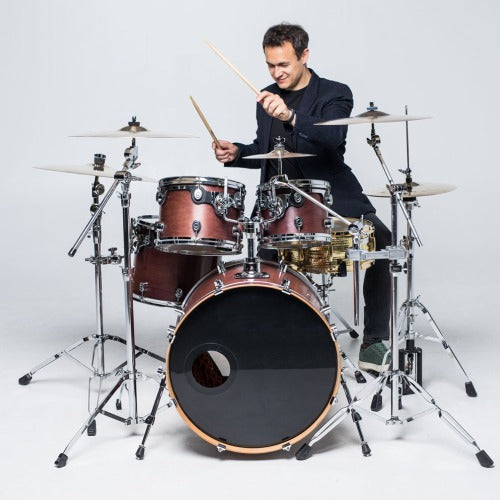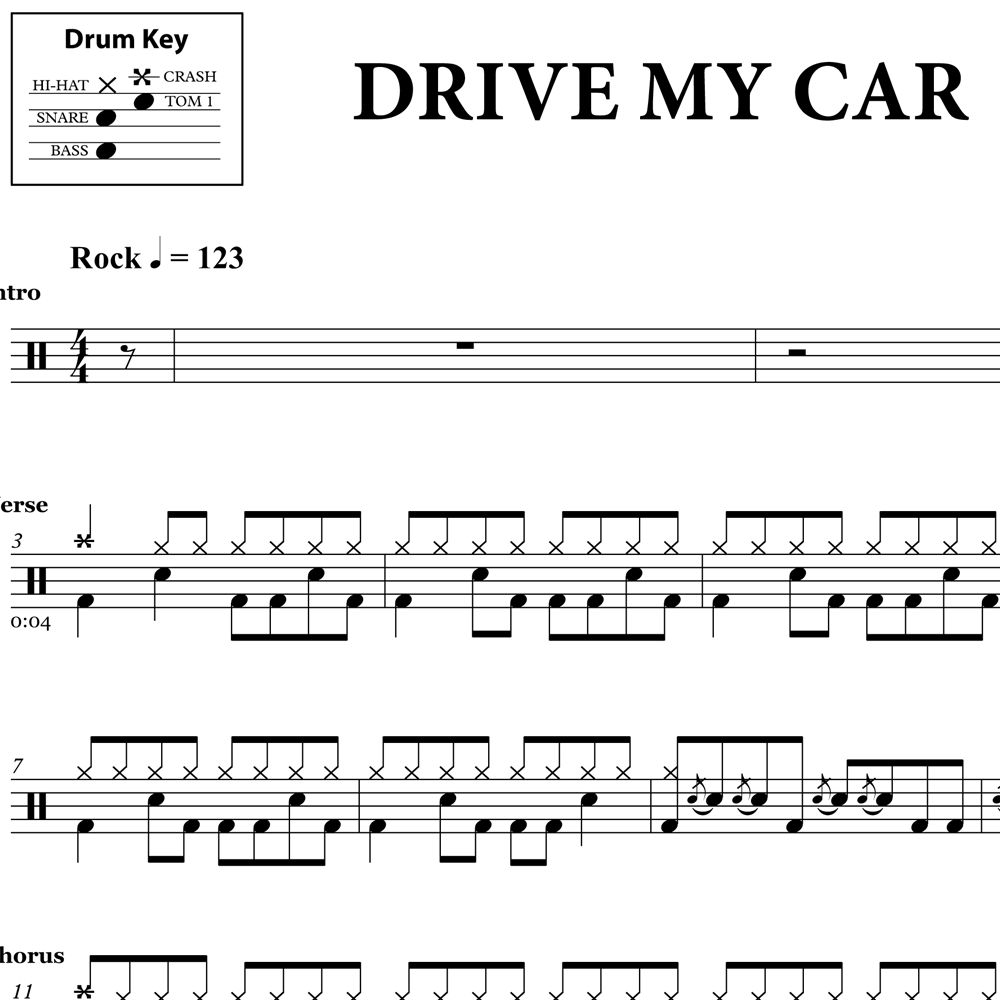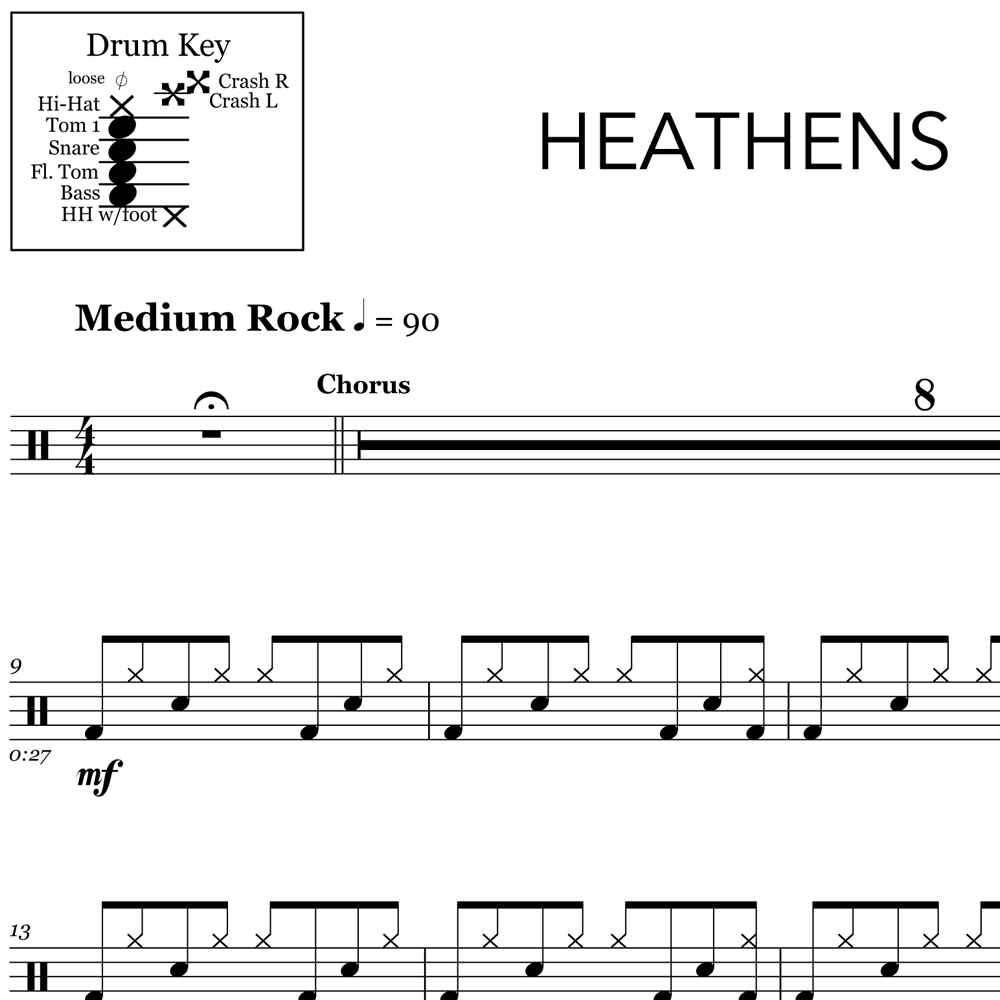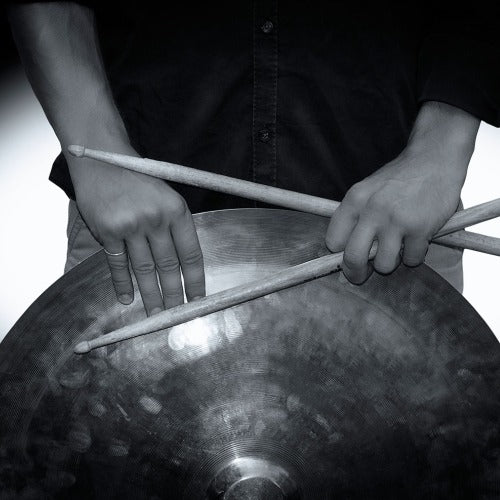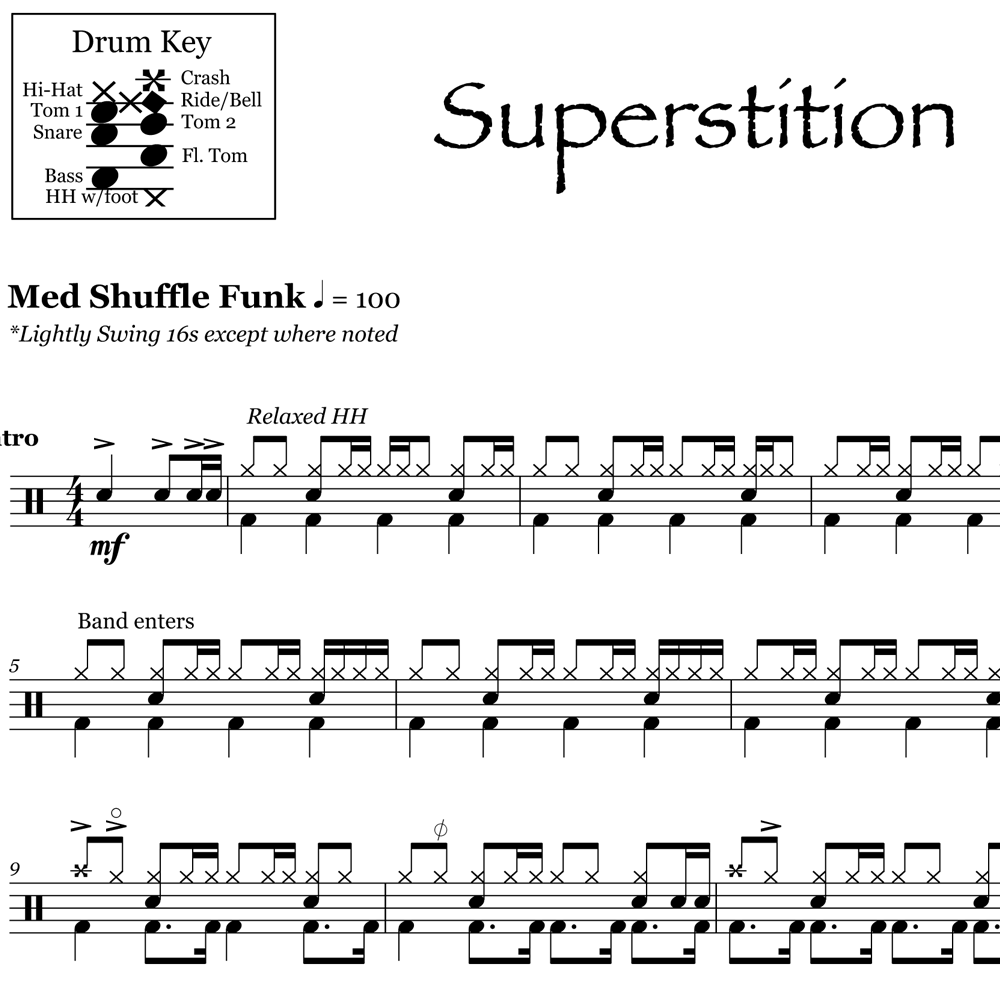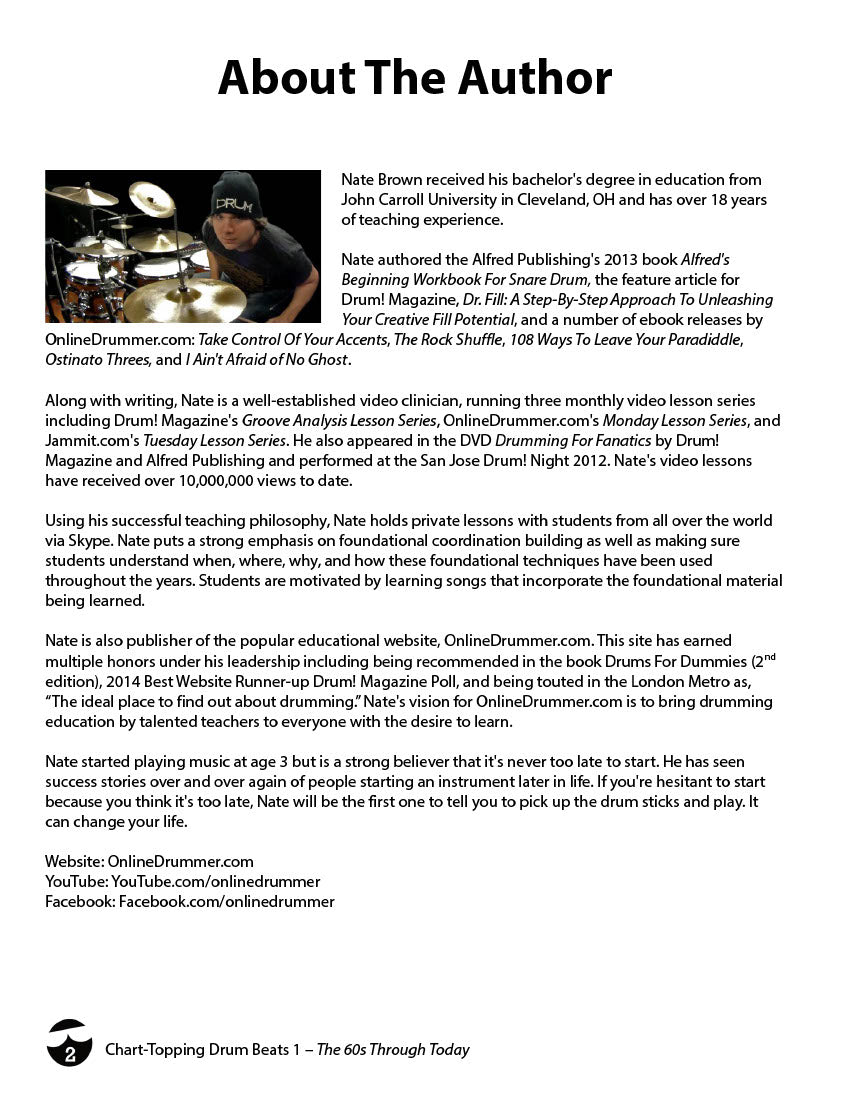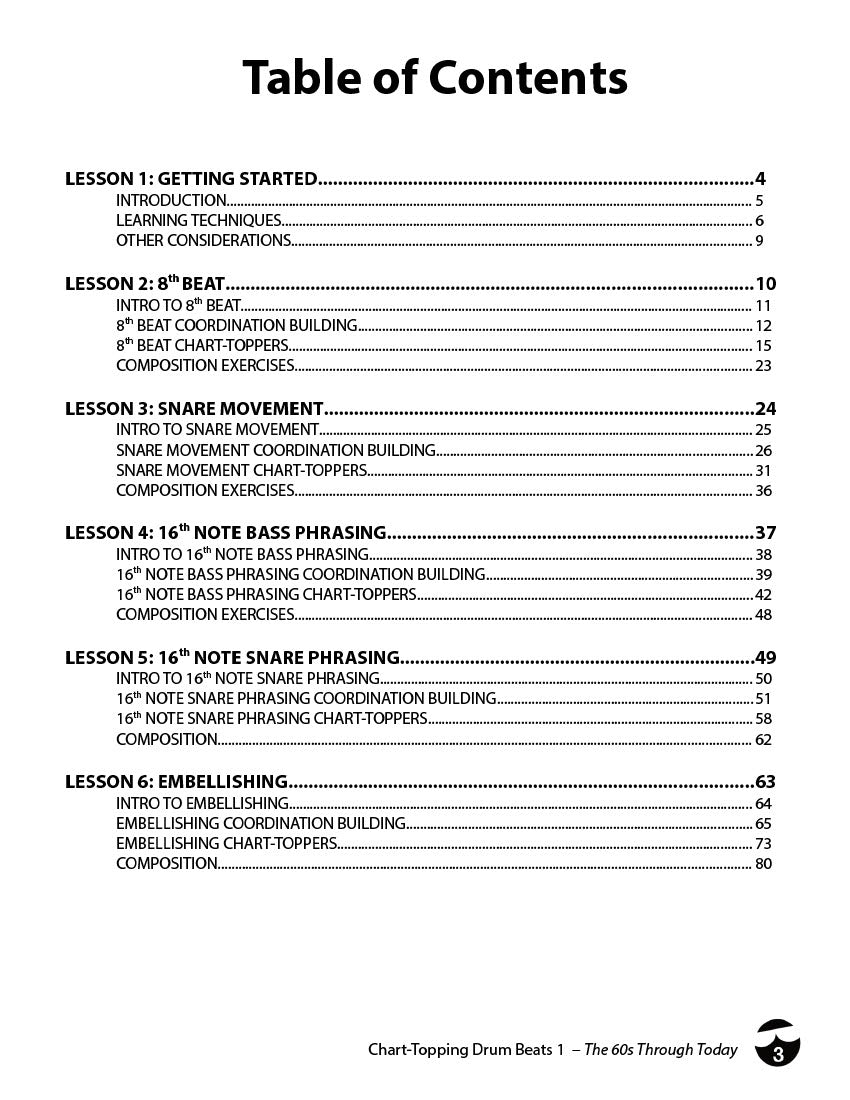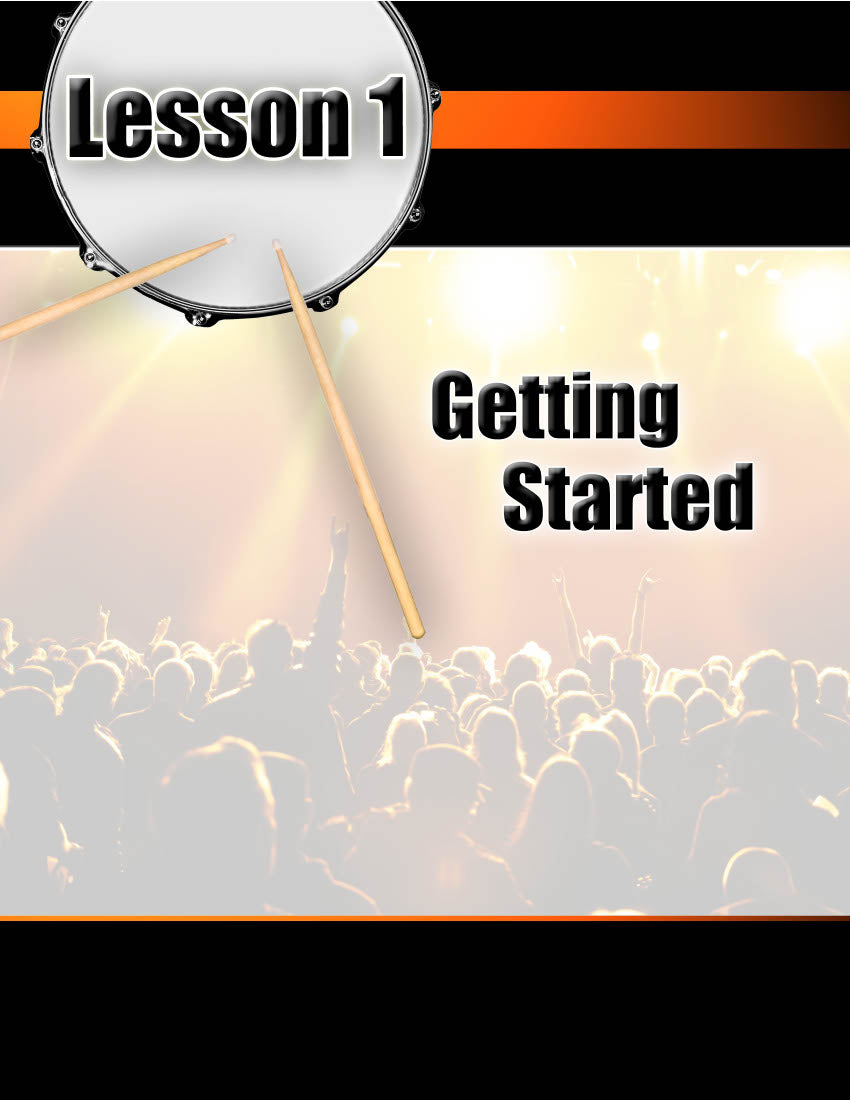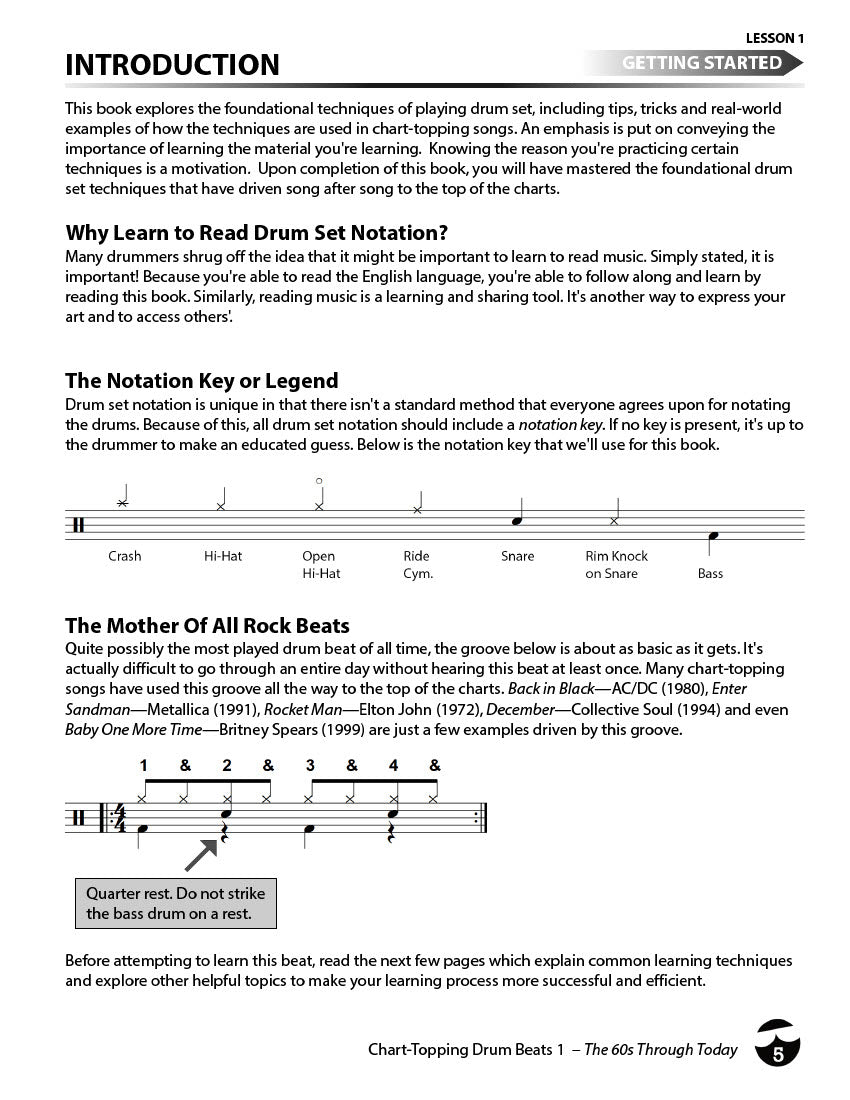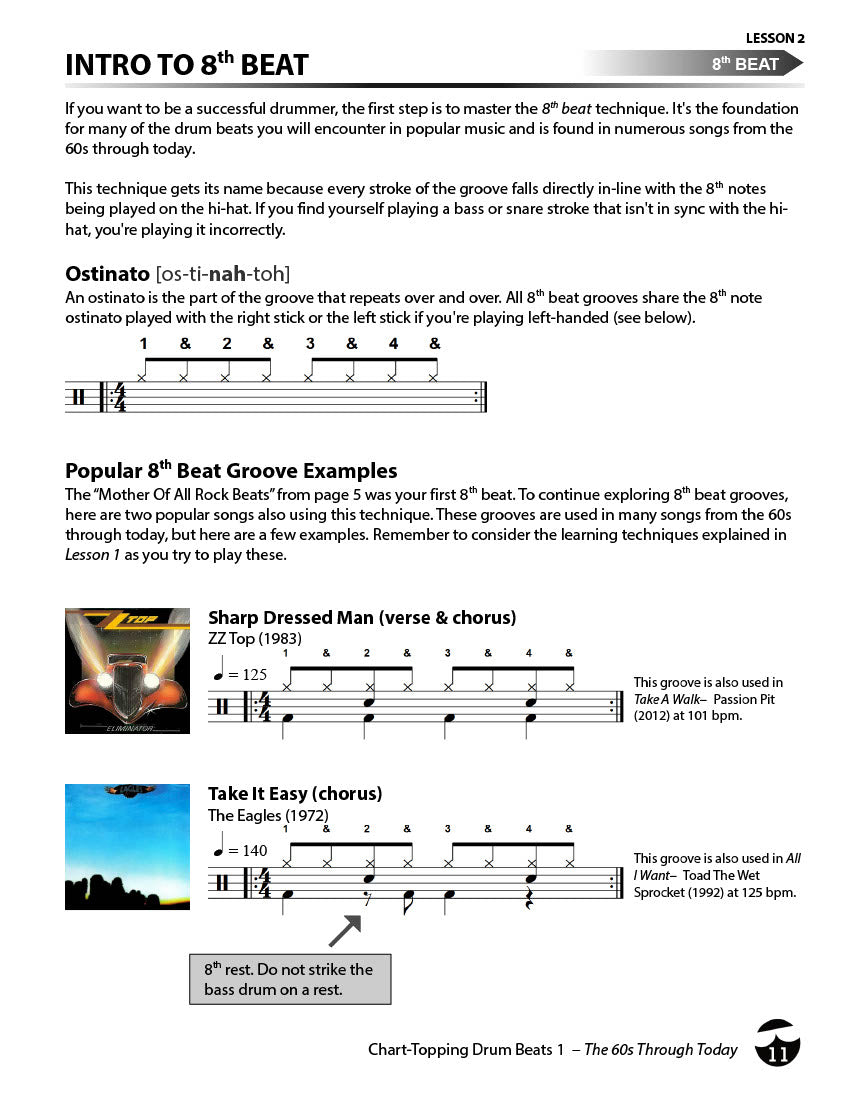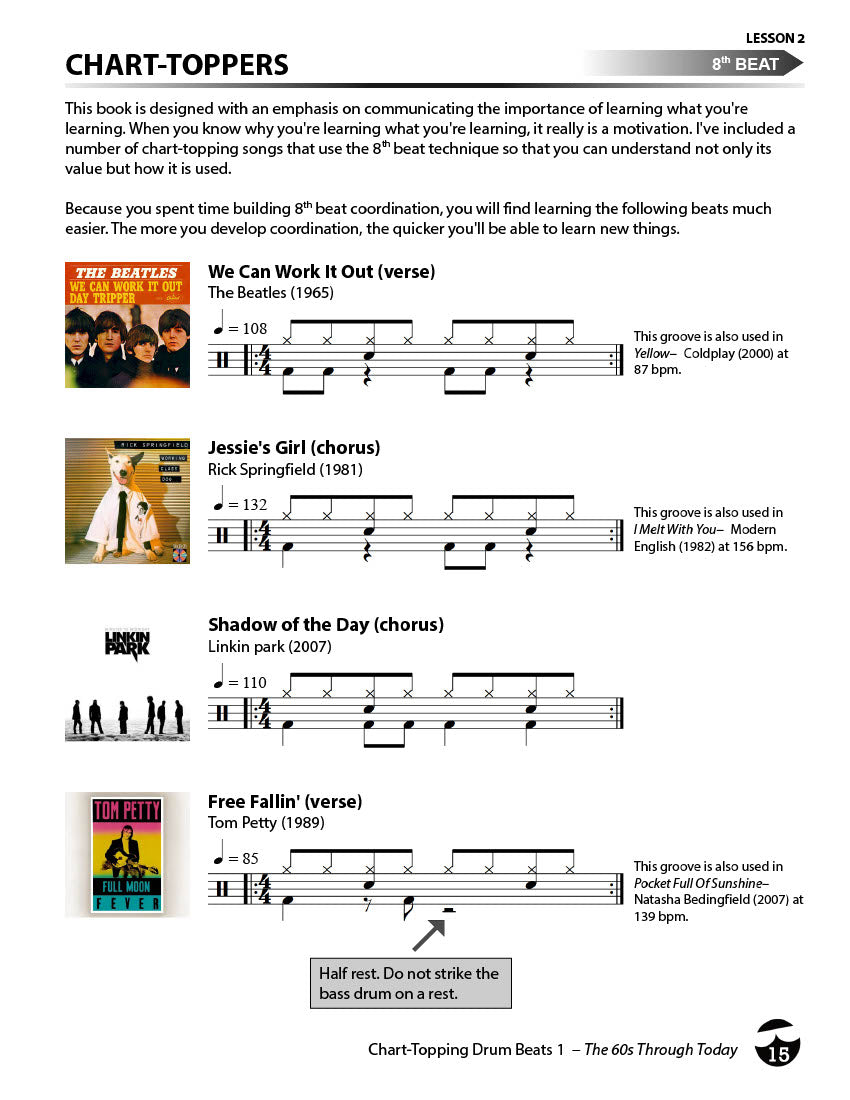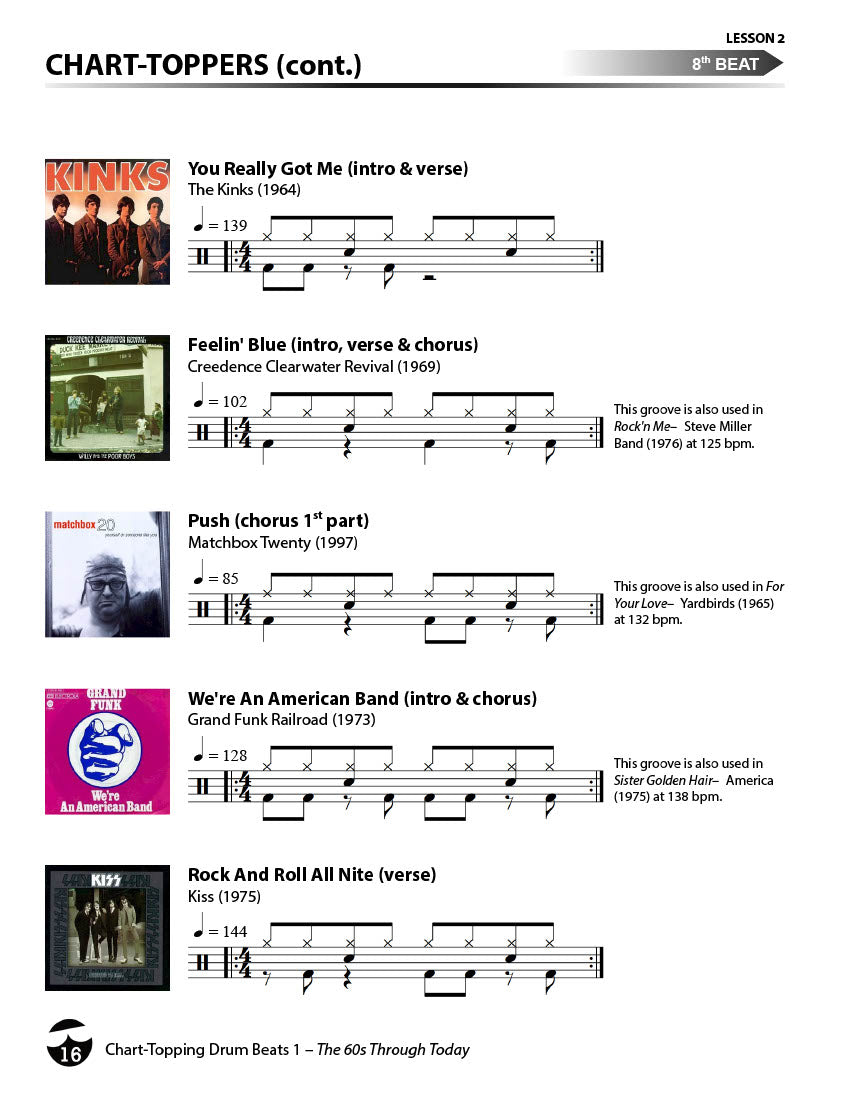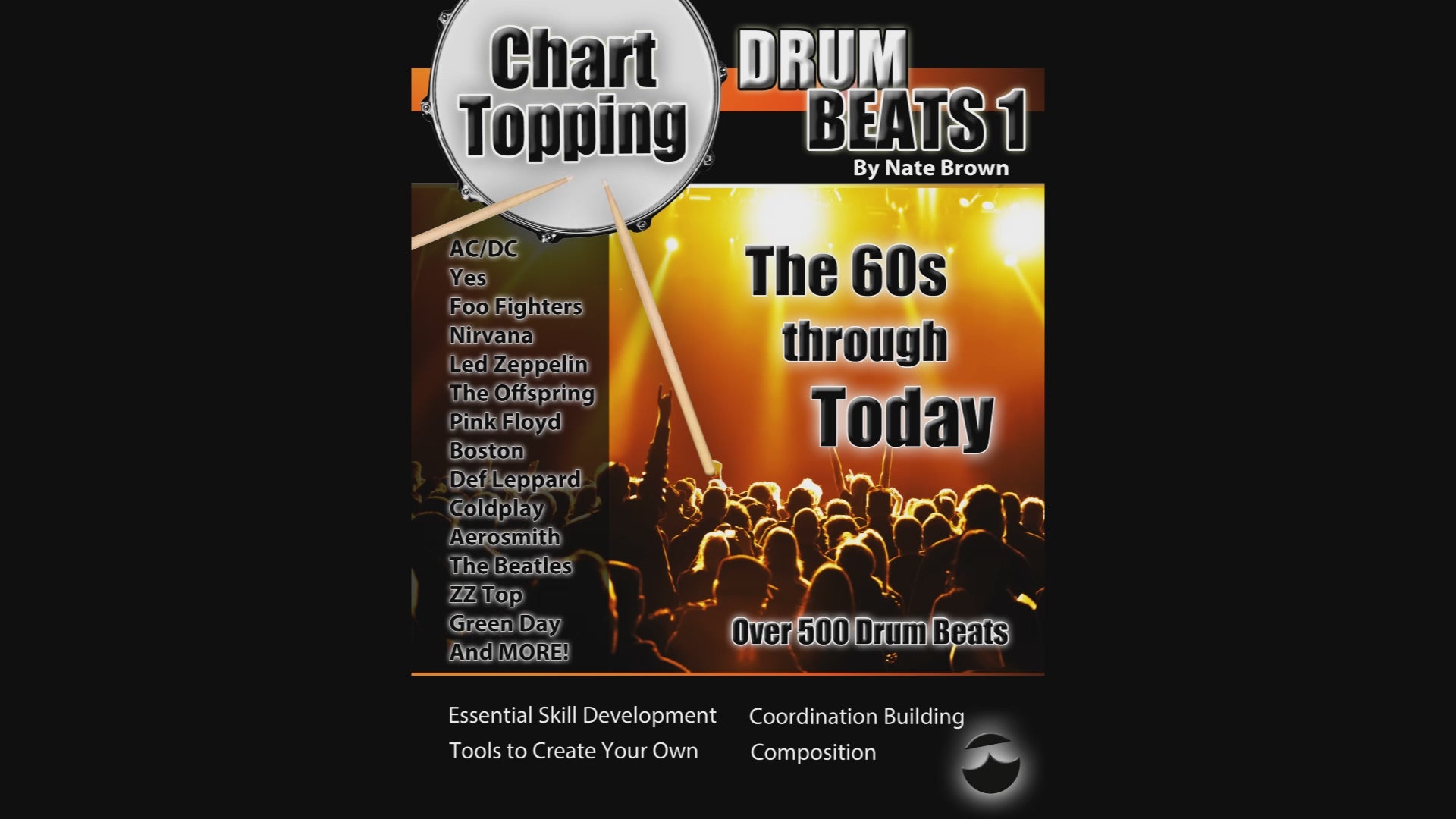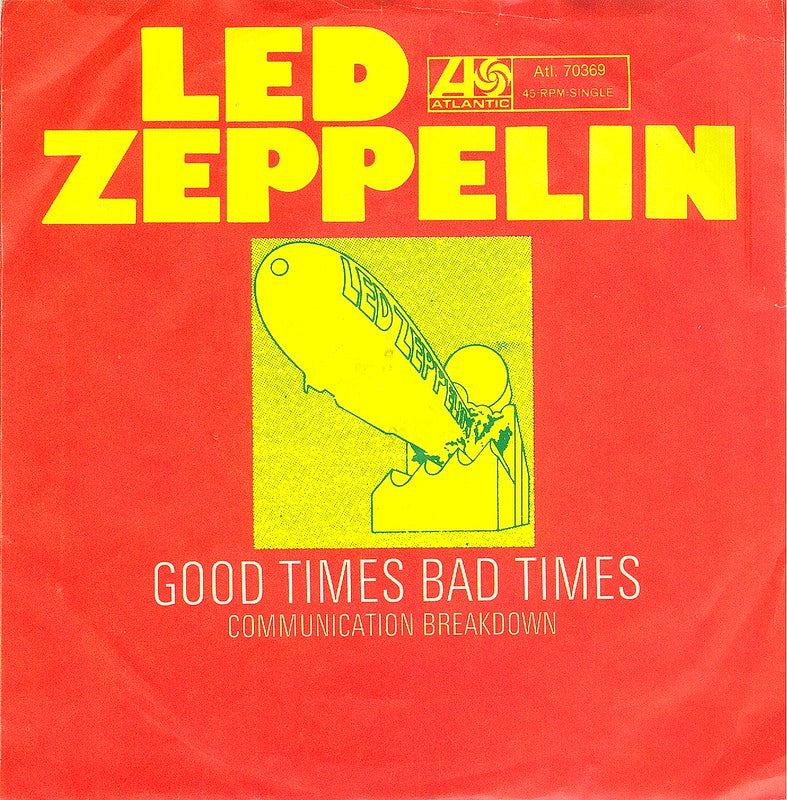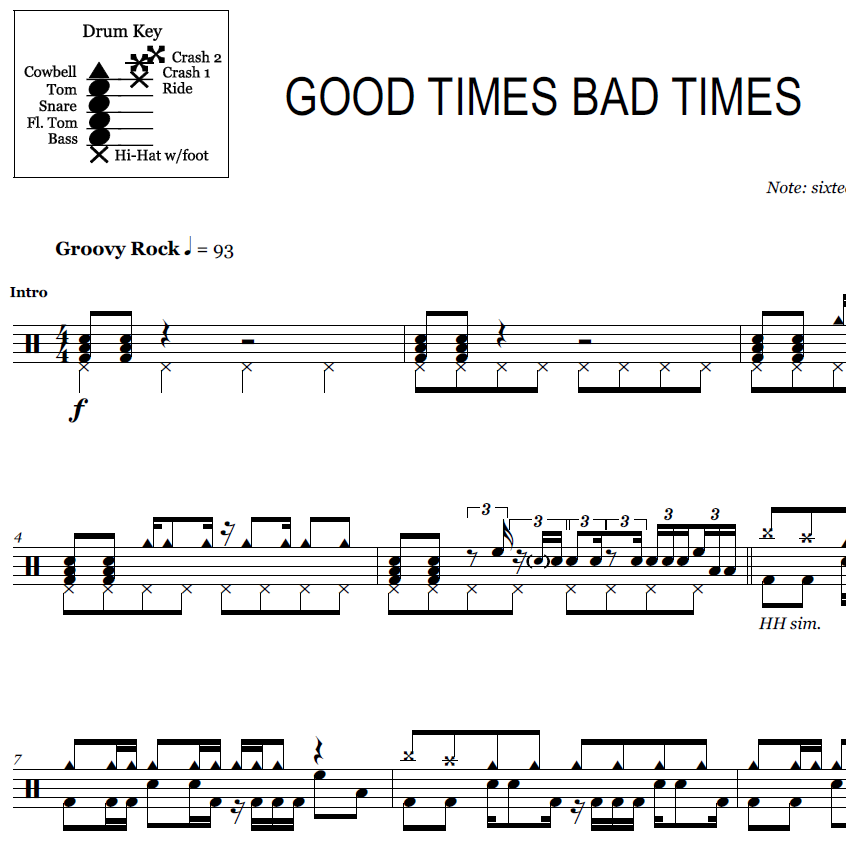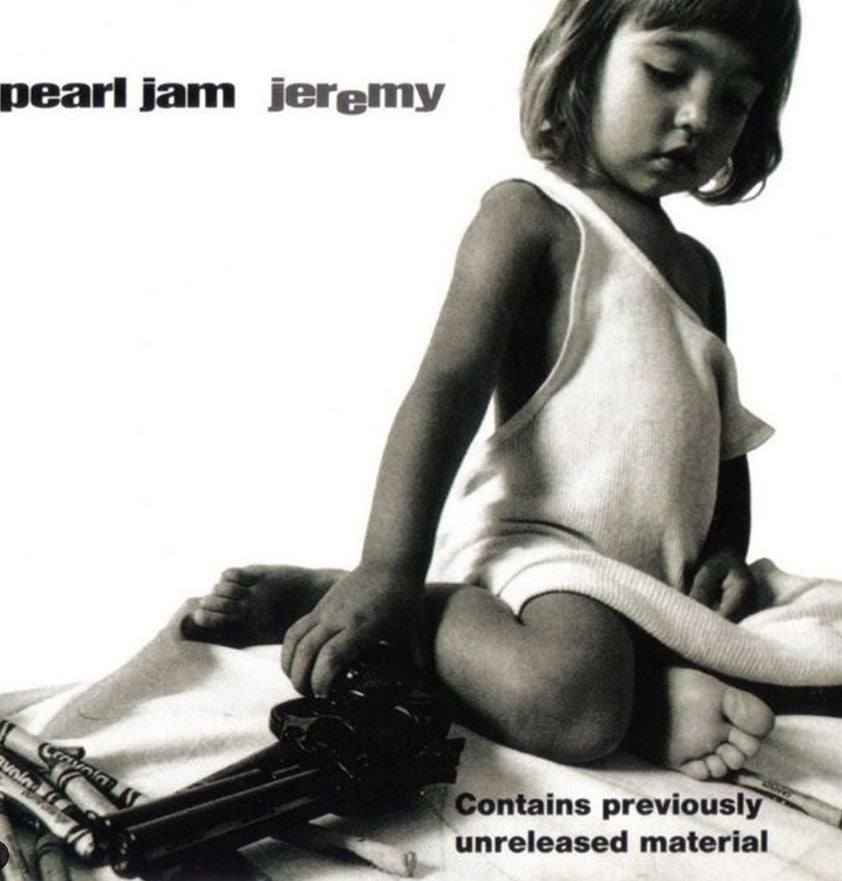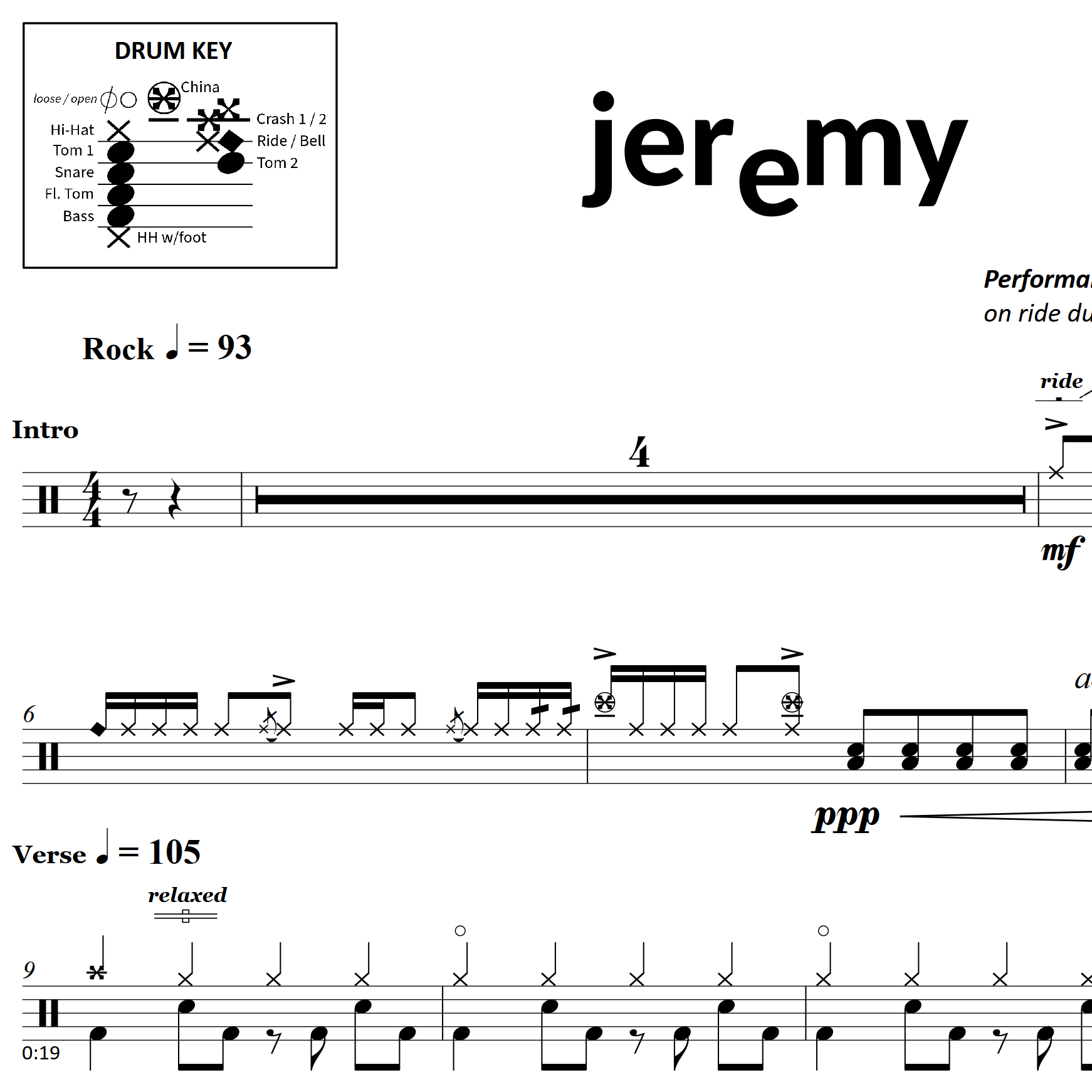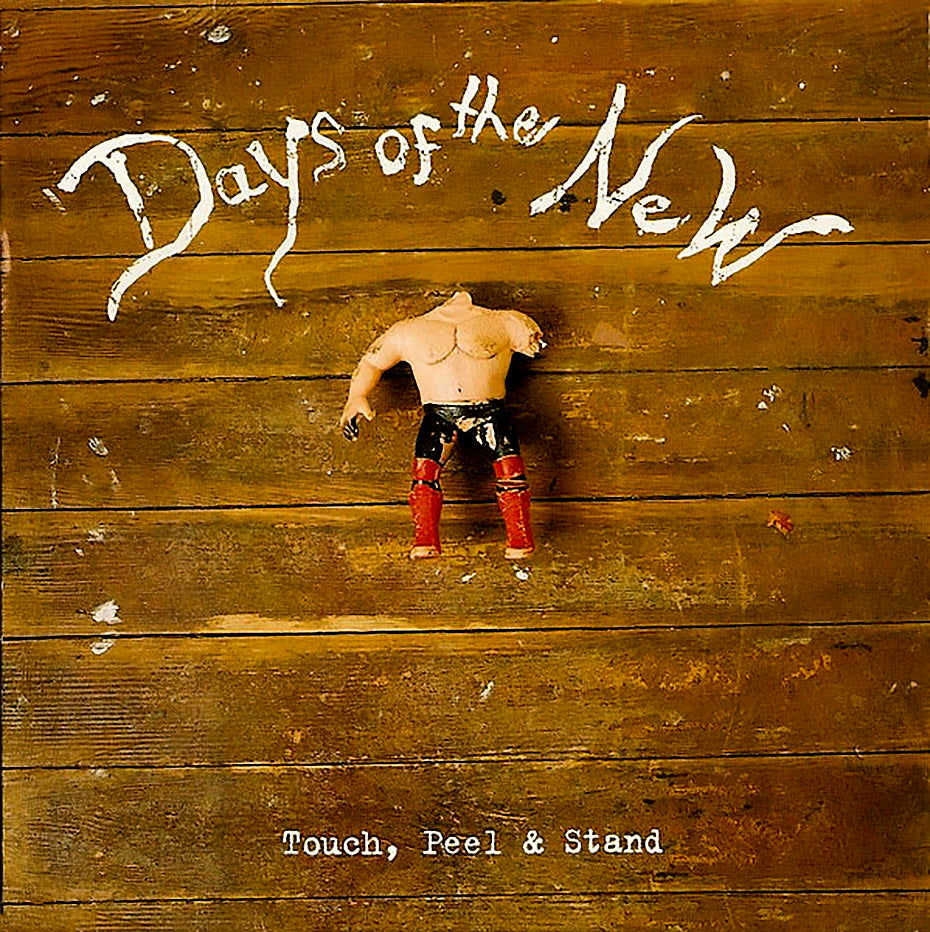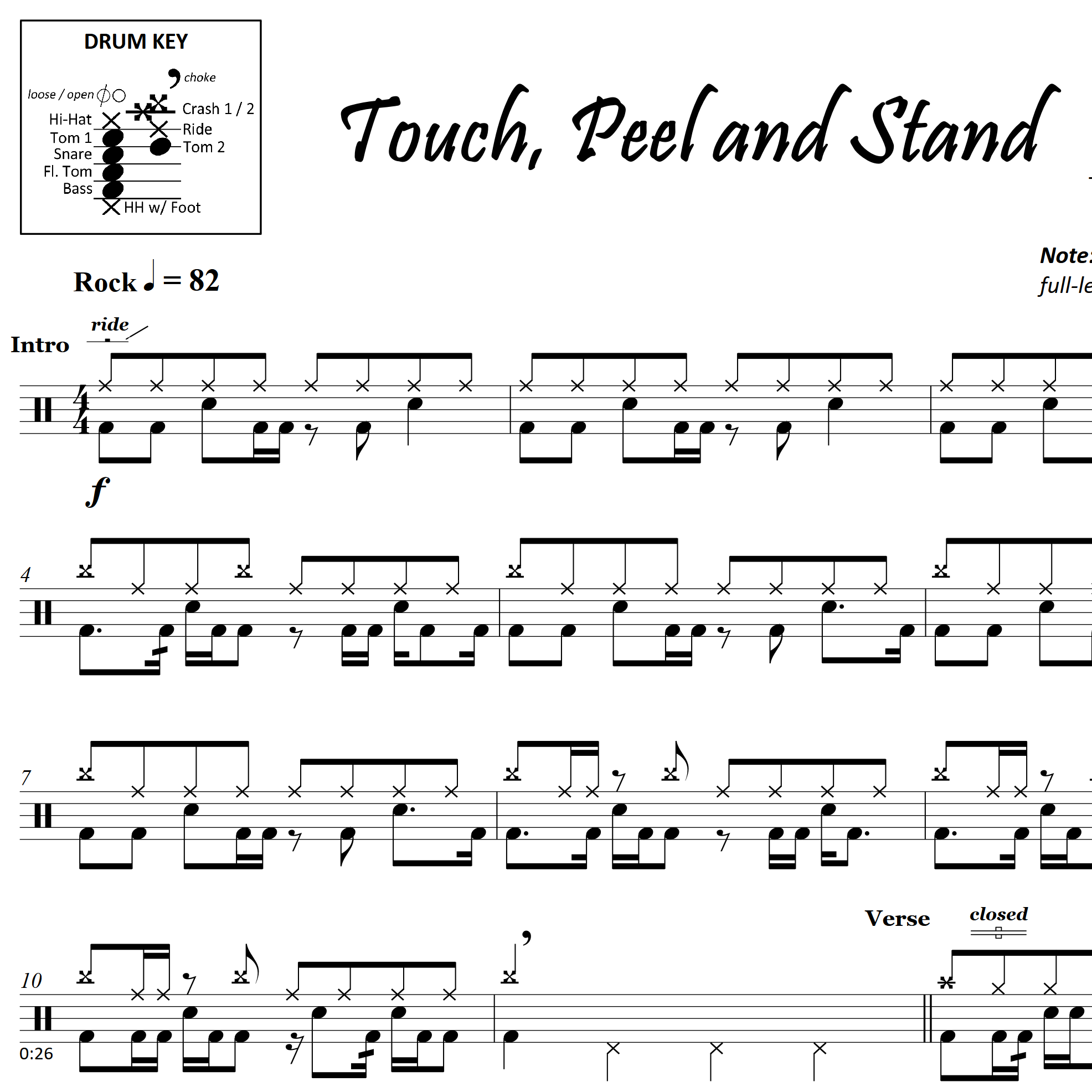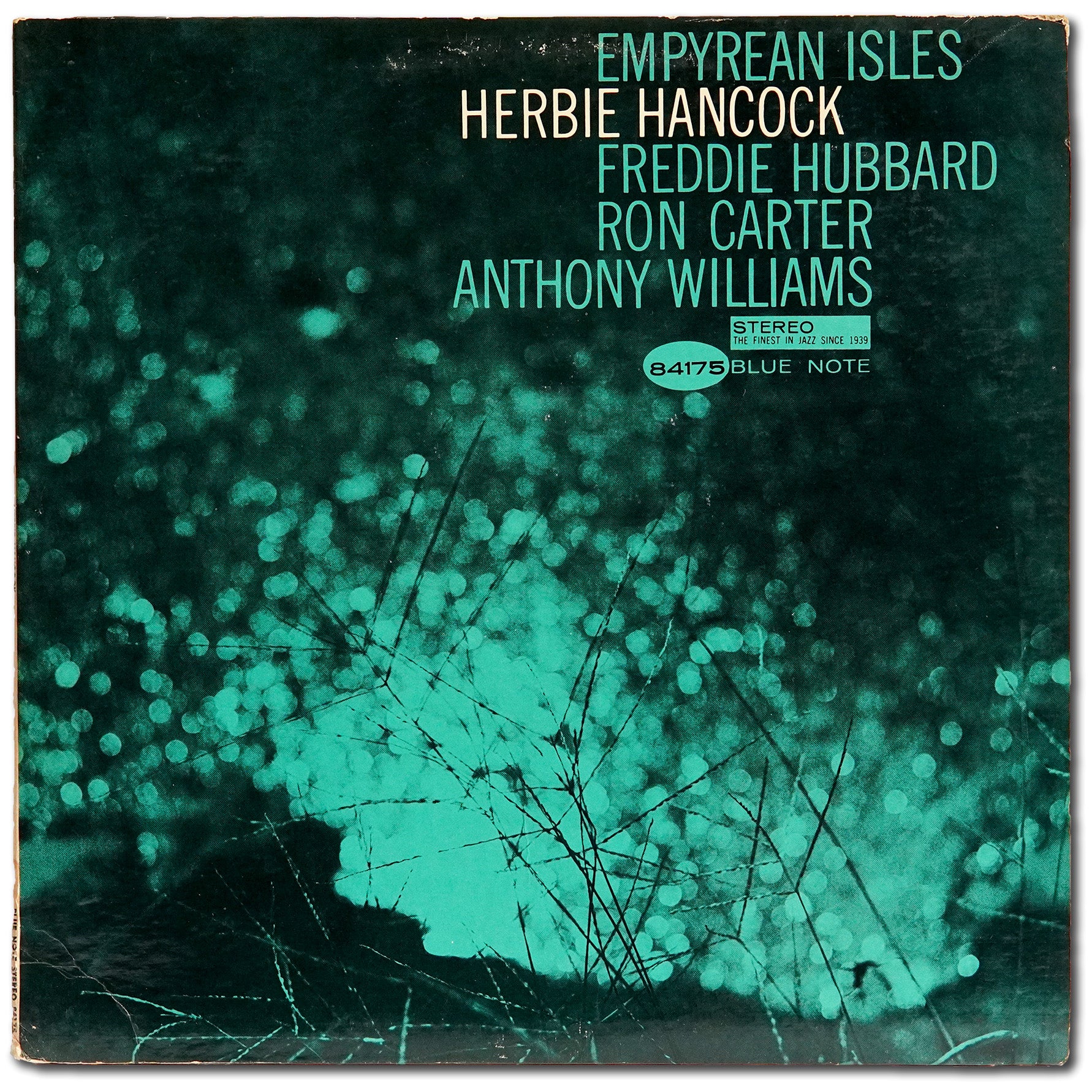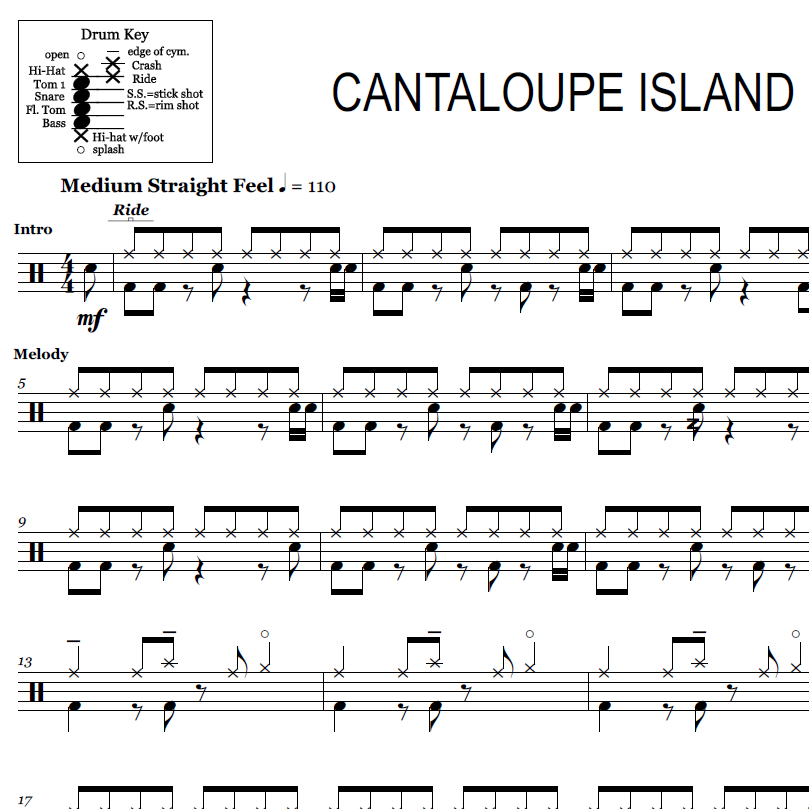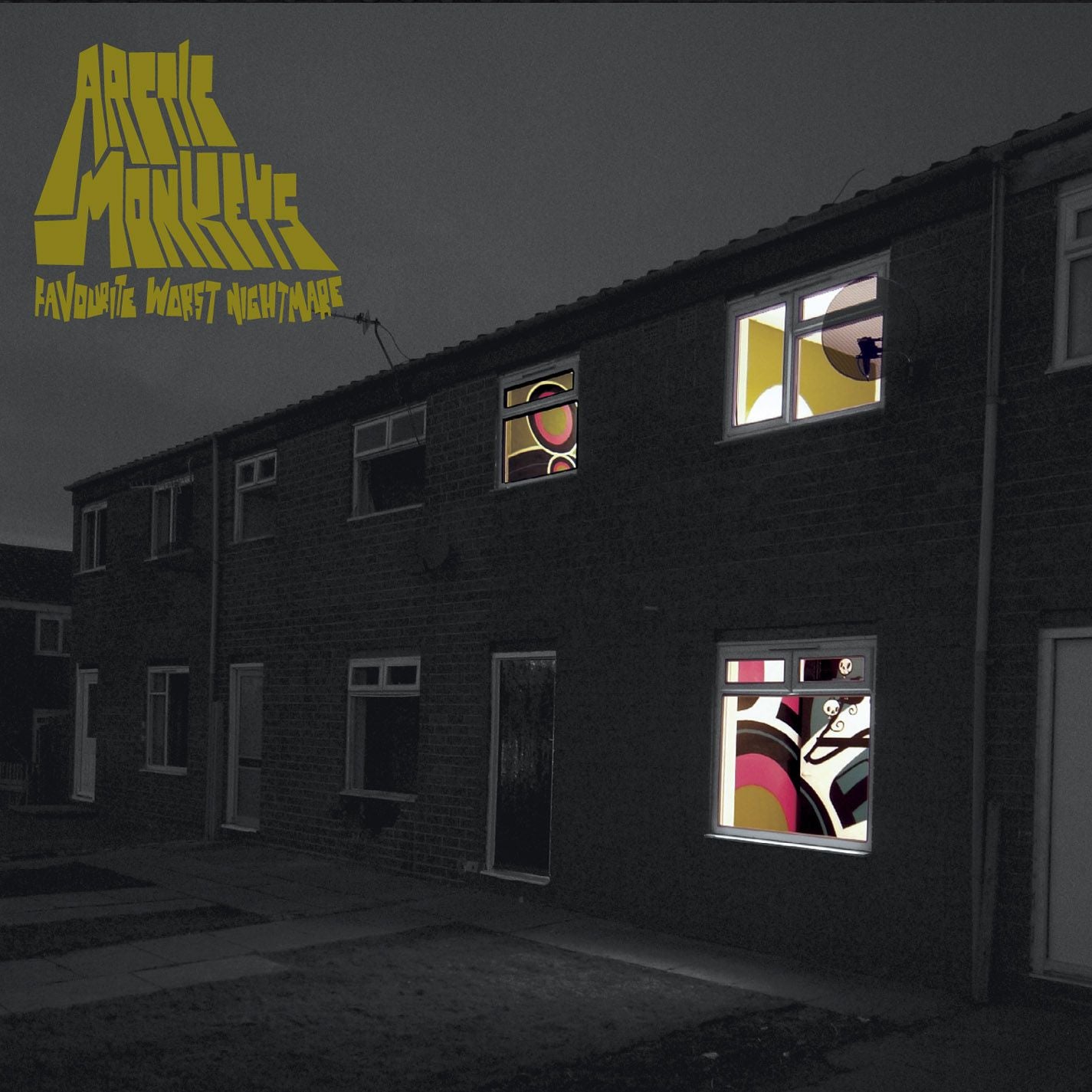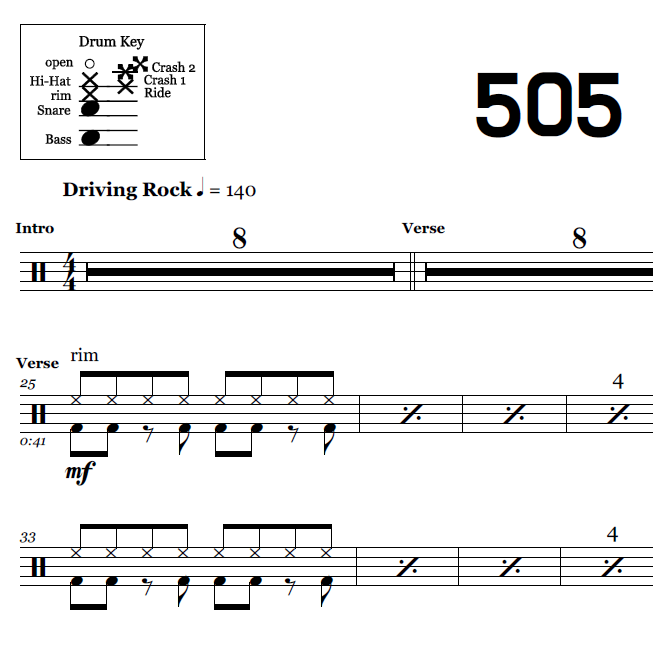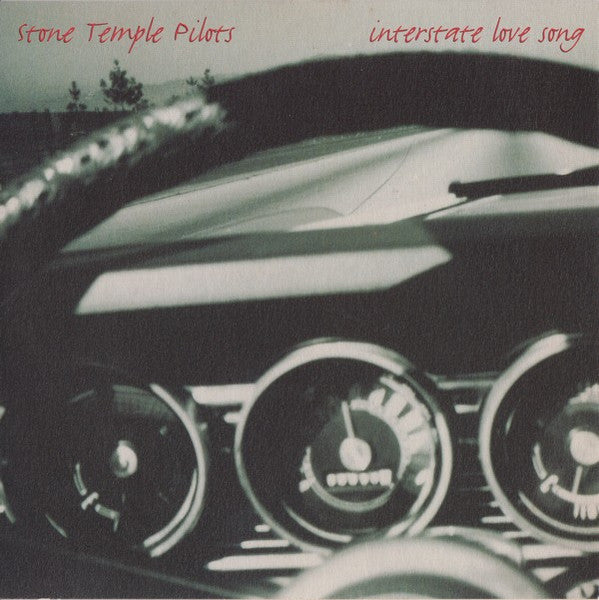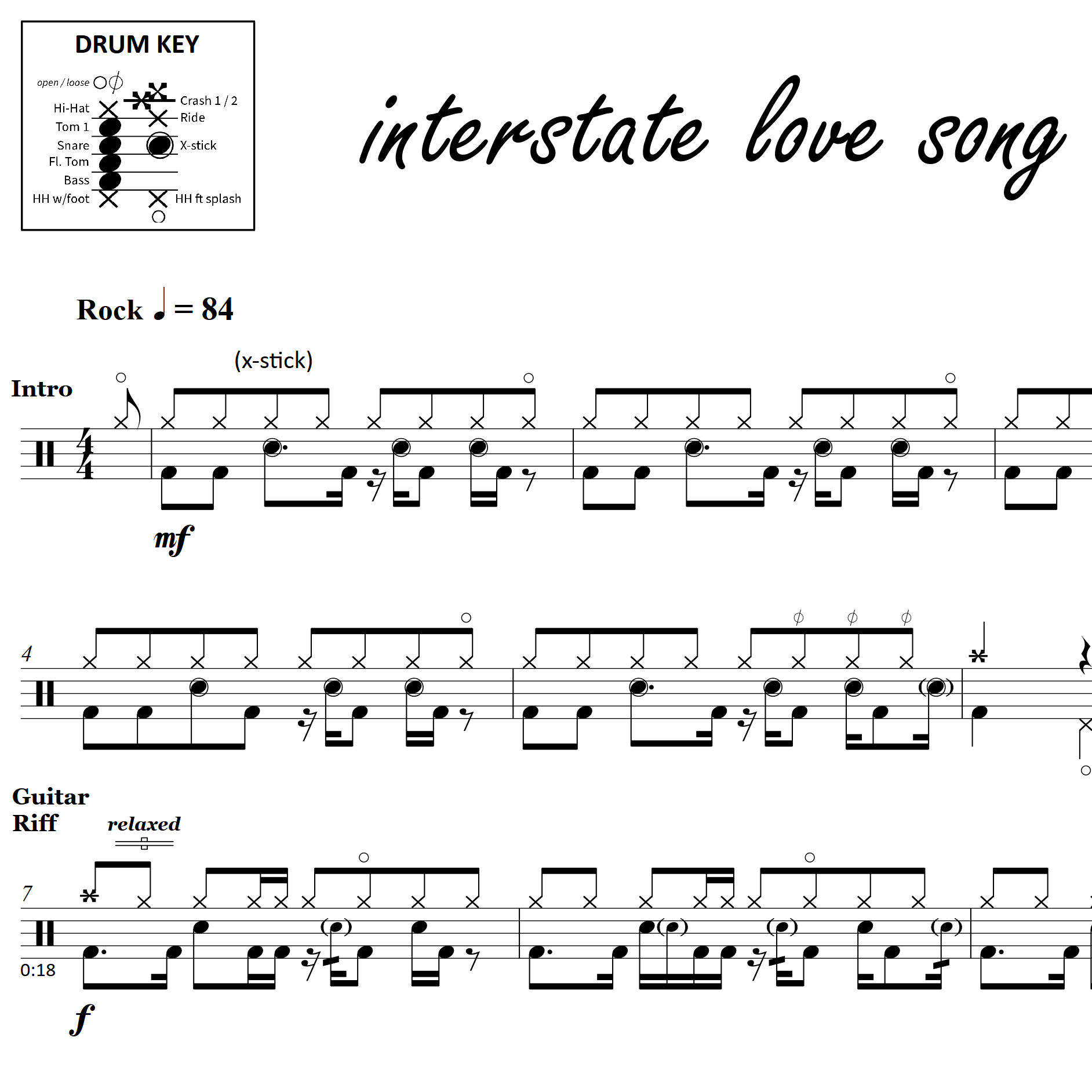Paradiddle Breakdown

The humble paradiddle's combination of single and double strokes lends itself to being accented on the beat. The double strokes allows a split-seconds extra time for the other stick to prepare for an accented stroke. Stick height is the most important element in playing accented sticking patterns with the right dynamics.
Exercise:
The following exercise has been designed to work up to the accented paradiddle in several steps. Note that in each step the sticking is based on the paradiddle, and the quarter-note pulse is accented.
Stroke dynamics:
Play the accented notes as down/control strokes — striking the drum from around 80 degrees (10 inches), then stopping the rebound a few inches from the head/pad by gripping the stick with your fingers. All other notes should be played at a low height as either tap or up-strokes*. A tap stroke starts and finishes low. An up-stroke starts low (like a tap) then rises in preparation for an accented stroke.
Steps:
- A: Accented quarter notes, played hand-to-hand.
- B: Double strokes in eighths, accenting the first note of each pair.
- C: Galloping rhythm, three notes with each hand.
- D: Paradiddle with accented pulse.
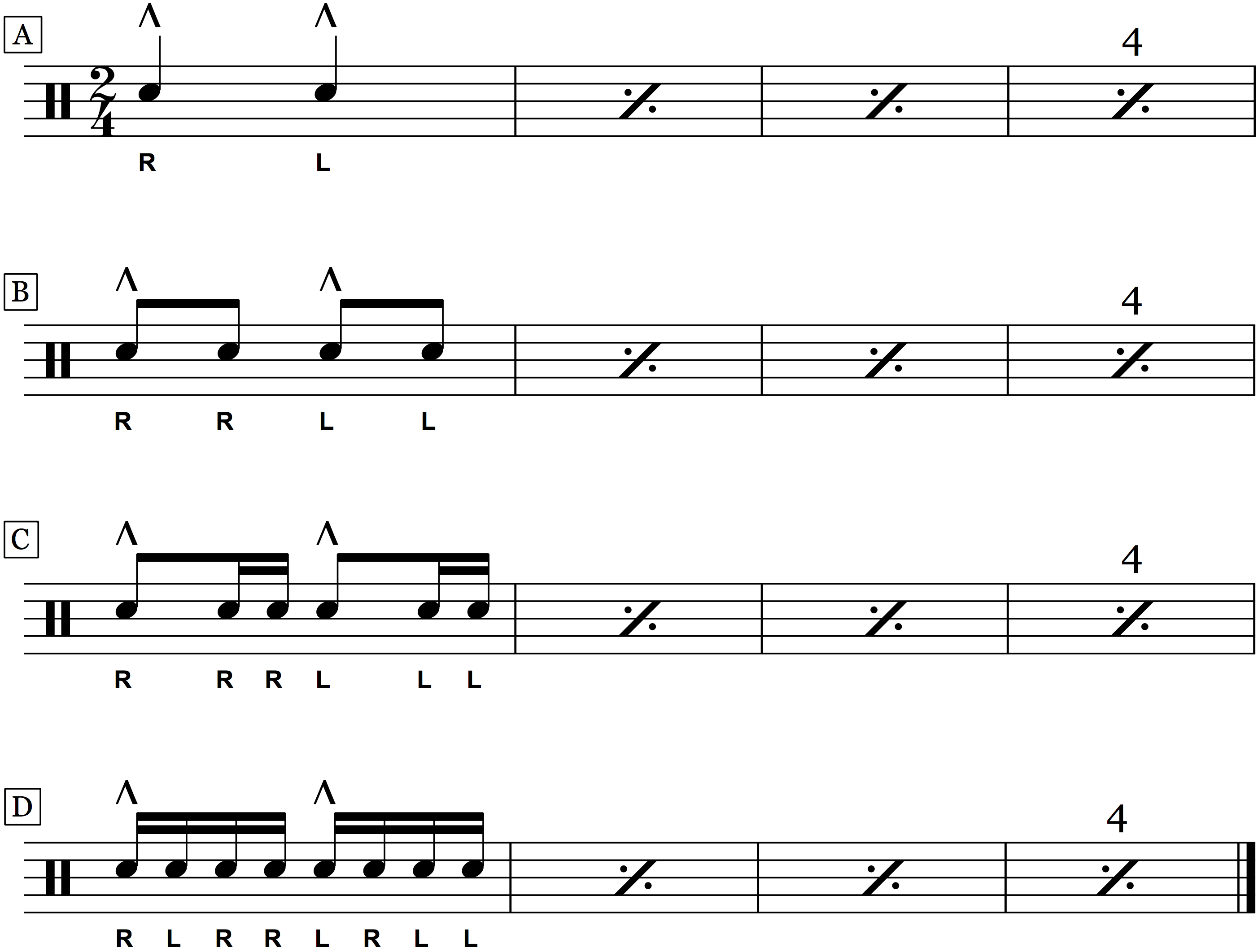
Puttin’ it together:
Once you are comfortable playing each of the steps, try the following phrase using the paradiddle sticking blueprint. This sticking is especially useful when you want to play the quarter note pulse hand-to-hand.


